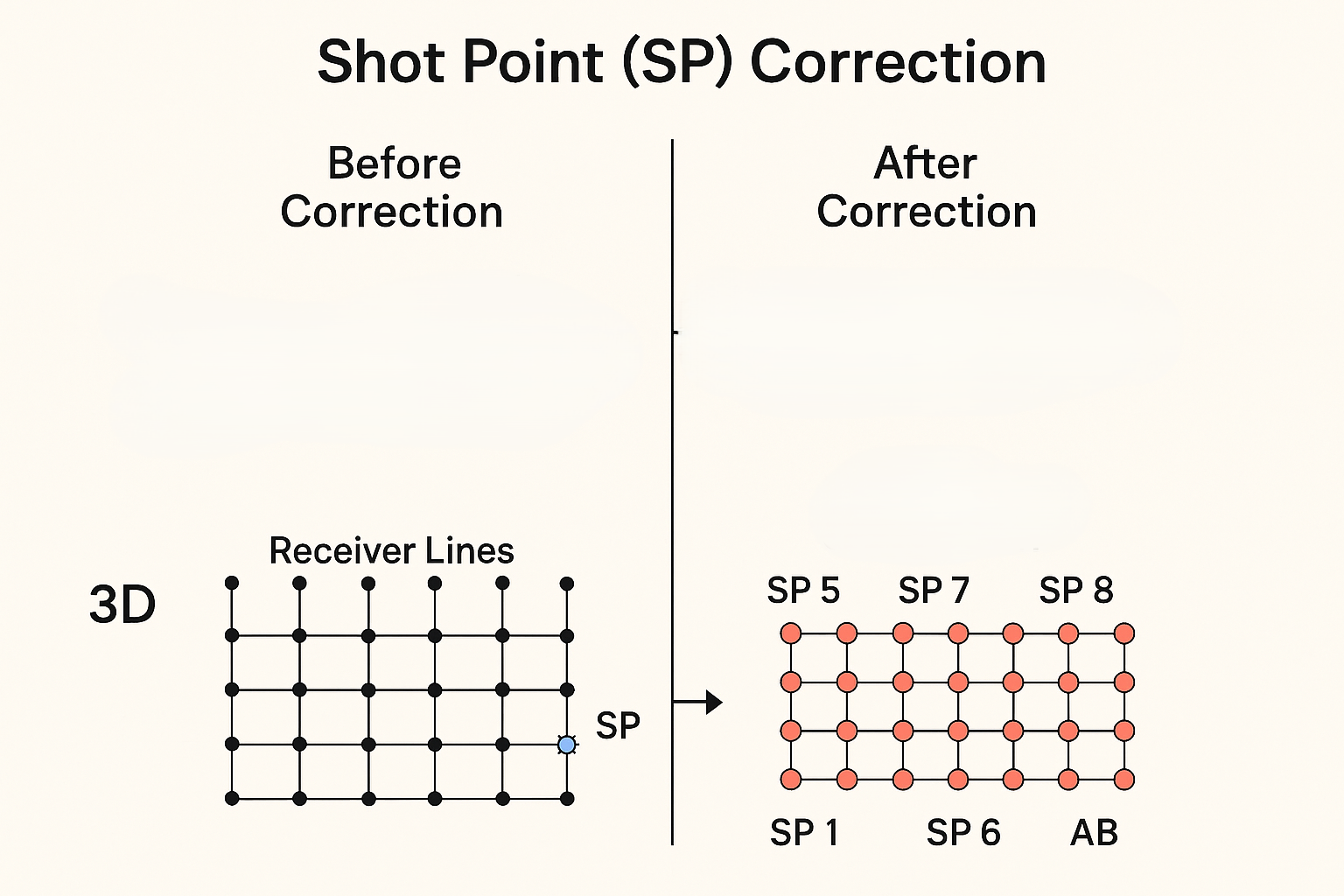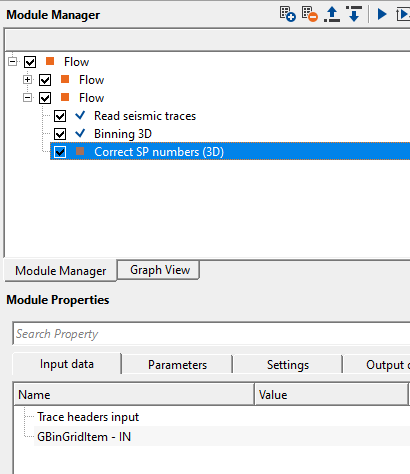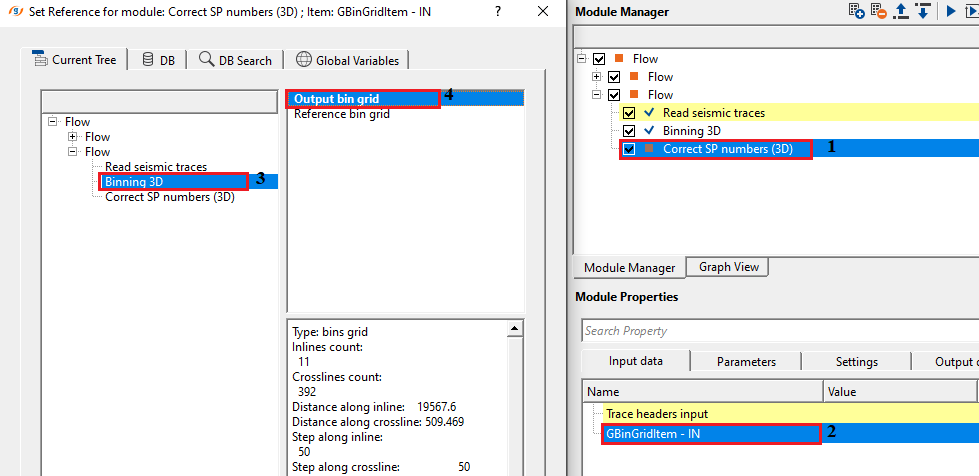![]()
![]()
This module performs source/receiver number correction (renumbering) for 3D seismic data. It calculates new source/receiver number and writes it into trace header.There are two input data geometry trace headers (“Read seismic traces/Read SEG-Y traces”) and grid (“Binning3D”) required. The grid used for calculation inline, crossline number. Then this numbers used for creation source and receiver numbers. Also module has possibility to fill-up elevation headers from input binning data.

Before Correction
•In 3D seismic acquisition, both sources and receivers are placed on a grid (inline × crossline).
•The black dots represent receiver stations forming receiver lines.
•The blue star (SP) represents a source location that is misplaced — i.e., not exactly on the designed grid intersection.
This can happen due to:
•GPS drift
•Terrain restrictions
•Human or recording errors
•Navigation inaccuracies
As a result, the shot grid is irregular, and binning (assigning traces to grid cells) becomes inaccurate.
After Correction
•After applying shot point correction:
oThe sources (SPs) are repositioned to their correct nominal grid intersections.
oThe grid now forms a clean, uniform 3D matrix of shot and receiver positions.
oEach intersection corresponds to one valid shot-receiver combination.
•The corrected shot points are labeled (e.g., SP1, SP5, SP6, SP7, SP8) to show the new organized pattern.
This ensures that:
•All source–receiver pairs are in the right geometric relation.
•The fold map (number of traces per bin) is accurate.
•The 3D cube built from the geometry is spatially correct.
![]()
![]()
Trace headers input- connect/reference to Output trace headers either from Read seismic traces or Read SEG-Y traces module
GBinGridItem - IN- connect/reference to Output bin grid in case connecting/referencing to Binning 3D. Alternatively connect/reference to loaded item if the user loaded the previously saved bin grid information by using Load item module. This bin grid information is utilized in generating the source/receiver SP/lines etc.
![]()
![]()
Generate SP (Source) { Composite source, Source line / SP, none }- this option allows the user to generate the Source Shot Point (SP) number. Choose the respective options from the drop down menu. By default, Composite Source.

Composite Source - generates Composite source by the combination of inline & crossline numbers i.e. Source number = Inline number + Crossline number
Source line - generates Source line by considering the crossline number i.e., Source line = Crossline number
Source SP -generates Source SP by considering the inline number i.e., Source SP = Inline number
None - there is no source generation or correction.
Generate RP (Receiver) { Composite receiver, Receiver line / RP, none }- this option allows the user to generate the Receiver Shot Point (RP) number. Choose the respective options from the drop down menu. By default, Composite Receiver.

Composite Receiver - generates Composite receiver by the combination of crossline & inline numbers i.e. Receiver number = Crossline number + Inline number
Receiver line - generates Receiver line by considering the inline number i.e., Receiver line = Inline number
Receiver SP - generates Receiver SP by considering the crossline number i.e., Receiver SP = Crossline number
None - there is no source generation or correction.
Recalculate source elevation- recalculates source elevation by input topo binning data. By default, FALSE (Unchecked).
Recalculate receiver elevation- recalculates receiver elevation by input topo binning data. By default, FALSE (Unchecked).
Recalculate bin elevation- recalculates bin elevation by input topo binning data (Binning 3D module creates smooth topography so the final elevations will be smooth). By default, FALSE (Unchecked).
![]()
![]()
Skip- By default, FALSE(Unchecked). This option helps to bypass the module from the workflow.
![]()
![]()
Trace headers output- generates updated output trace headers
There is no information available for this module so the user can ignore it.
![]()
![]()
In this example workflow, we connect/reference Trace headers input to Output trace headers, GBinGridItem to Output bin grid.



![]()
![]()
There are no action items available for this module.
![]()
![]()
YouTube video lesson, click here to open [VIDEO IN PROCESS...]
![]()
![]()
Yilmaz. O., 1987, Seismic data processing: Society of Exploration Geophysicist
 * * * If you have any questions, please send an e-mail to: support@geomage.com * * *
* * * If you have any questions, please send an e-mail to: support@geomage.com * * *